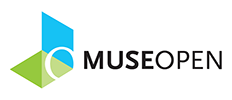This is Open Access Week, an opportunity for concentrated information sharing and reflecting on issues and policies. This year’s theme is “Open for Whom? Equity in Open Knowledge” which seems an apt theme for exploring open access (OA) and books, and particularly humanities books which have been historically the most complex scholarly form to fit to OA policies and projects aimed at the largely STEM journals market.
For the start of OA Week, I interviewed Barbara Kline Pope, Director of Johns Hopkins University Press (JHUP), and Wendy Queen, Director of Project MUSE, about a Mellon/NEH funded project managed by JHUP in partnership with JHU’s Sheridan libraries to create digital OA editions of 200 currently out-of-print books. The first 100 of those books are being released this week.

Could you describe how you came to develop this particular project, and its principal aims?
Barbara Kline Pope (BKP): This project was in development when I arrived at JHUP in late 2017. Greg Britton, our editorial director, took the lead in creating the OA proposal for consideration by the Andrew W. Mellon Foundation and the National Endowment for the Humanities. The project is certainly In line with our mission as a university press to disseminate scholarship far and wide. And, we have been interested in experimenting with new business models and new ways of delivering important scholarship, especially in the humanities. It’s also appealing to move important content from an out-of-print status to one that is free and open to the world.
As you noted, Mellon and NEH provided generous funding to bring 200 books back to life through this program. The first 100 were launched today on Project MUSE with an accompanying robust promotional campaign. We’re proud of the effort and eager to see the response. Our aim, as with all of our publishing, is to extend the reach of our authors’ work and to amplify its impact. What author doesn’t want engagement and impact? We conducted an experiment recently at JHUP comparing the reach of our open and gated content on Project MUSE, and we confirmed that we can dramatically increase engagement with our content through open publishing.
That aligns with my long experience at the now completely open National Academies Press.
Are these 100 OA books a pilot or case study? Can you describe why you chose out of print books to take OA?
Wendy Queen (WQ): These 100 additional books from Johns Hopkins University Press represent a continuation of our work at MUSE Open, which launched in 2018 and currently hosts OA monographs and journals from more than 60 publishers. MUSE is an agile platform and provides novel support systems as new models and experiments emerge. At MUSE, we have been analyzing the usage data to help JHUP and our other partner publishers gain the evidence to support their ongoing missions. And so while we are still in early days, I wouldn’t necessarily call this a pilot.
BKP: We have multiple OA programs at JHUP now so we didn’t have to choose between unleashing out-of-print books and those in-print. We created programs for both. We knew about the call for proposals from Mellion and NEH and that fit well with our quest to digitize and make free the most important scholarship in our archive. The other program we launched with our own funding last year involves taking older in-print books and making them free to read in Project MUSE.
What are the fellow travelers in the OA book space that you think the JHUP initiative is informing, and is informed by (platforms such as Fulcrum, the digital monographs pilot at UNCP)? As we look at the landscape for these projects, what are your takeaways about OA monographs?
BKP: In the humanities specifically, we are all still in the early stages of developing business models, infrastructure, and the community to support OA monographs. And we know from other publishers and from our own experience at JHUP that the demand from authors for OA monographs is growing but still not the dominant mode of publishing that they choose. It is important that we all continue experimenting across our community from all angles.
WQ: Through grants from Mellon and NEH, we now see many complementary approaches to publishing, hosting, and supporting OA monographs. Together we have formed a community to examine how best to analyze usage statistics across platforms and build strategies to continue complementing one another. With more sophisticated infrastructure and community participation, we can continue improving the systems and models to create a stronger foundation for OA monographs in the humanities.
The JHU Open Access titles initiative focuses on disciplines in the humanities–history, literature, philosophy–that are heavily book disciplines. Scholars in these disciplines both produce and consume longform scholarship intensively. Could you reflect on why and how you came to this focus, and why you think that it’s an important feature of the initiative?
 BKP: It’s important that we stay up to date with, and even ahead of, where scholars want to discover their peers’ work and where public intellectuals find their most interesting reads. What we know from talking with scholars and librarians is that humanists often discover work electronically and then ask their librarians for the printed version for deeper reading. This, of course, is not the only use case. We are positive that people also discover and read on line and others just buy the printed book for browsing and reading.
BKP: It’s important that we stay up to date with, and even ahead of, where scholars want to discover their peers’ work and where public intellectuals find their most interesting reads. What we know from talking with scholars and librarians is that humanists often discover work electronically and then ask their librarians for the printed version for deeper reading. This, of course, is not the only use case. We are positive that people also discover and read on line and others just buy the printed book for browsing and reading.
Discovery has been the coin of the realm forever. Starting in the early 1990s, the Web brought us a massive discovery engine. And it has long been a boon for driving attention, engagement, and impact. MUSE was the original online platform for JHUP journals and reinvented itself many times over the past 25 years to become the discovery place for all of the humanities and humanistic social sciences. And we are working now on a number of new models that can ensure that libraries can provide their readers with both the discovery aspects of e-versions and affordable complementary print versions for deep reading.
Related, authors, perhaps especially in the humanities, are confused by OA as a disparate set of policies and practices. How do you work with authors on OA? Do authors look for OA, or are you helping them to understand its benefits? Another way to explore this would be to ask if authors are more concerned about royalties, or readership? Is there a relationship there that’s relevant for the JHUP OA initiative?
BKP: We worked with hundreds of authors of JHUP books in two different initiatives (bringing 200 books back to life and making 100 older but still in print books free to read). In both, we needed to communicate with the authors to gain the rights to openly post their books on Project MUSE. Of the 300 interactions, we had only a handful of authors say “no” to allowing us to post their work for free to read. Would we have that same experience with new monographs? We don’t know. We aren’t experiencing substantial demand for making new books open. But we are ready at JHUP and at MUSE for when that demand increases — and that’s important.
It makes sense that readership would be more important to scholars than royalties given that no one is making money publishing monographs. But, in order to make new monographs viable as open, we need funding. That’s the roadblock here. Scientists have money in their research grants to pay the article processing charges (APCs) for their journal articles. Humanists do not have those funds to be able to make their long-form scholarship financially viable for open access. There are programs like TOME (Toward an Open Monograph Ecosystem) that are working to redirect university-based funds for making monographs open. It is going to take many programs coming together and multiple business model experiments to flip this system.
In your experience, how can we best understand the consumption patterns for digital monographs and for OA books generally? What guides your thinking and decision-making from a readers’ perspective?
BKP: We are all readers and know that we are thrilled when we discover new content that fits with our own line of inquiry. We need to ensure that our work is discoverable and available to read. My good friend and former colleague, Michael Jensen, said that we, as university presses, should worry about obscurity rather than piracy. When books were first posted on the Web decades ago, publishers worried about piracy (and still do). And that’s not wrong, particularly for our best-selling books. But for monographs, I think we need to worry about obscurity. It’s our responsibility to strive to reach every reader for every book. And making content free to read in a financially sustainable way can position us to meet our responsibility.
We know engagement patterns for our own books because of an experiment we conducted with those 100 older in-print JHUP titles this past year. We merged the Project MUSE usage data with JHUP’s sales data comparing the time periods when a collection of older books were gated with when they were open. We learned that sales were not affected by opening up this group of books but engagement increased, on average, three times. One book in this group experienced 118 times the usage!
Sharing this reader engagement information is a priority so that others will begin to feel more comfortable experimenting with open publishing in their own book programs. We can all learn from each other and MUSE’s robust statistics capabilities and ability to handle so many kinds of content types makes experimenting possible.
WQ: I agree. We need a much larger set of observations to draw any firm conclusions about reader behavior and engagement and sales for humanities books. We can then know definitively how much having an open digital component increases discoverability and readership and its effect on sales.
What are the key lessons you’ve learned from the project thus far?
BKP: From the 200 JHUP books arising from our archives, we have learned much about the process. It is incredibly time-intensive to reach authors (or estate representatives) to secure the rights to relaunch their books. Greg Britton and the editorial assistant on the project, Will Krause, have many stories to tell about their sleuthing to clear rights. Thankfully, Mellon and NEH provided funds in their grant to cover Will’s time. Our most important advice might be this: Do not underestimate the time it will take to deal with the details that you didn’t know existed before undertaking this kind of project. For example: What should be on the verso-title page? How do we represent in metadata the new pub date without suggesting to the reader that the content is new? What happens when we just cannot reach the author?
WQ: On the Project MUSE side, we have learned that in a gated space, we know more about the readers than in an open space. At the same time, it is fascinating to see content that we have assumed to be more western-focused, consumed globally. Our goal is to connect as many readers to the content globally and analyze the patterns of usage.
The more data we collect and the more comparisons we have with other platforms, we more we see the need for standards to define usage. MUSE is participating in many efforts to help define the standard. One of our goals is to post more OA content so that we are well positioned to contribute to the conversation and ultimately a standard.
What will you take into the release of the next 100 books?
BKP: The next 100 books brought out of our archive will be released as they are available between October 2019 and March 2020. We anticipate that they will be much easier to produce, given that all of the details have been worked out for publishing these kinds of books. And we will continue to experiment with the reading experience on the MUSE platform. We cannot wait to see and share the results!
Discussion
5 Thoughts on "Open Access Books: The First 100 Books from Johns Hopkins University Project"
What effect if author granted rights to another publisher after John Hopkins declared a book out of print?
Hi Mitch. Thanks for your question. We didn’t run into this situation but I am sure we wouldn’t be able to digitize and post the book unless the other publisher’s version had also gone OP with rights going back to the author.
Barbara, are you registering these with Crossref? I noticed that no DOI was provided in the “view citation”, just a hardcoded Muse ID.
I’m a librarian looking to add catalogue records for these and we prefer to use DOIs whenever possible for their long term persistence.
Hi Melissa. We do register DOIs at the book level and should appear in the citation. There are a few exceptions that are being addressed, but the majority of OA titles should have DOIs assigned and appear in the citations. Let me know if you run across any problems. Thanks.
It would be interesting to have the conversation with authors about the “maintenance” of their labors as part of the publisher’s contract for the initial monograph. Planning ahead for these questions — “What should be on the verso-title page? How do we represent in metadata the new pub date without suggesting to the reader that the content is new? What happens when we just cannot reach the author?” — could become part of the discussion of the monograph’s publication. I think many authors would like to know what kinds of problems can arise decades later (pre- and post- copyright expiration), and how to make their creative efforts continue to be available to new generations of readers.


